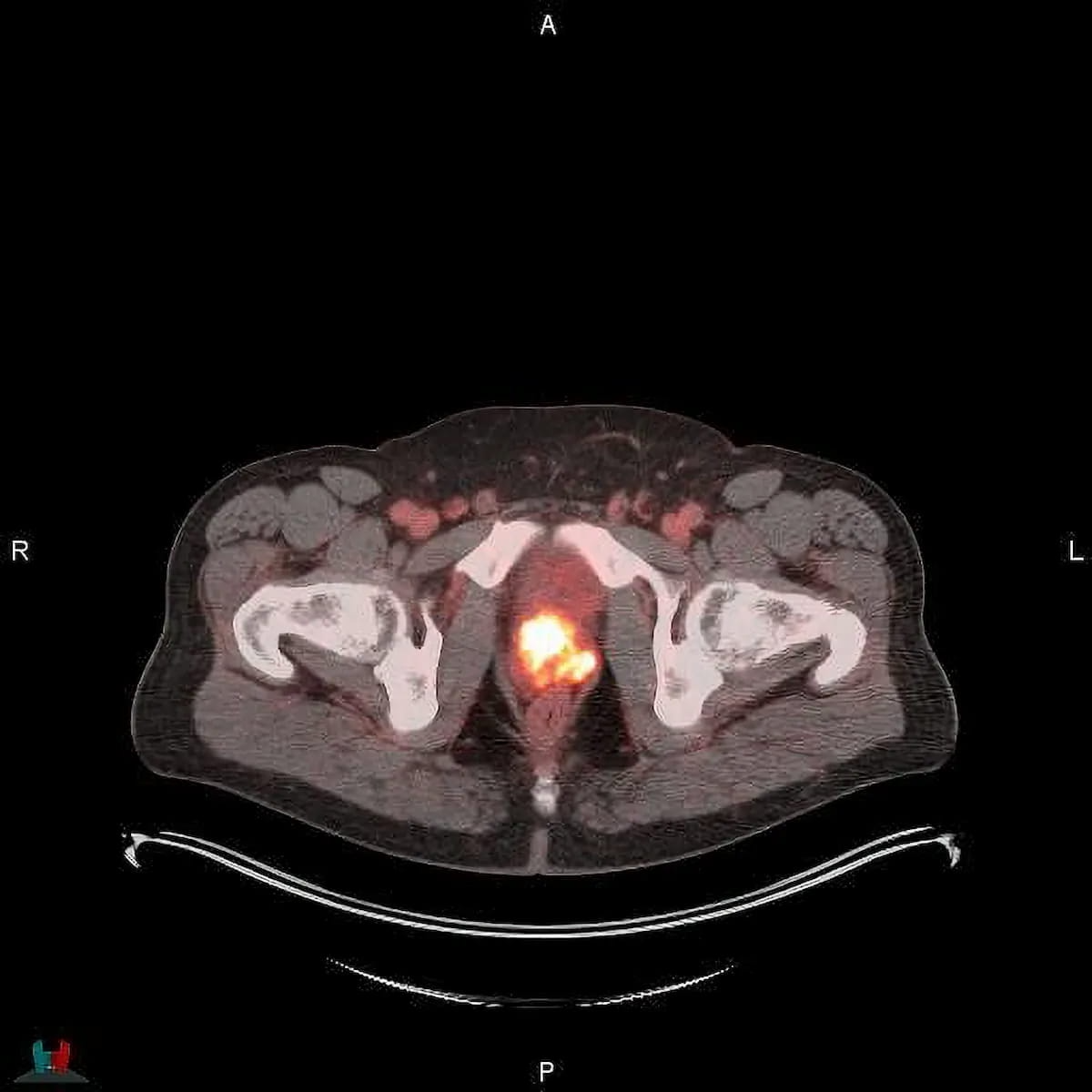Study: 18F-Flotufolastat PET Imaging Changes Treatment in 89 Percent of Patients with Prostate Cancer Recurrence
For patients with recurrent prostate cancer, PET scanning with 18F-flotufolastat led to major changes in treatment for 80 percent of patients and 75 percent of patients with a changed treatment focus to watchful waiting had negative scans, according to new research presented at the American Society of Clinical Oncology (ASCO) Genitourinary Cancers Symposium (ASCO-GU).
Emerging research from the SPOTLIGHT trial suggests the PET radiotracer 18F-flotufolastat may have a significant impact on treatment changes for patients with recurrent prostate cancer.
In a study, recently presented at the American Society of Clinical Oncology (ASCO) Genitourinary Cancers Symposium (ASCO-GU) in San Francisco, researchers reviewed treatment plans prior to and after 97 patients with recurrent prostate cancer had positron emission tomography (PET) scans with 18F-flotufolastat (Posluma, Blue Earth Diagnostics).
The study authors noted this subgroup in comparison to the overall SPOTLIGHT study population had comparable percentages of prostatectomy procedures, Gleason scores and median prostate-specific antigen (PSA) levels.
The researchers found that 89 percent of the subgroup cohort (86 of 97 patients) had treatment changes after PET imaging and major changes to management plans occurred in 78 patients (80 percent). The study authors also noted negative 18F-flotufolastat PET scans for 75 percent of patients whose management plans were revised to watchful waiting.
In a new study, researchers found that 89 percent of patients with recurrent prostate cancer (86 of 97 patients) had treatment changes after PET imaging with 18F-flotufolastat and major changes to management plans occurred in 78 patients (80 percent). (Image courtesy of Blue Earth Diagnostics.)

“Both positive and negative 18F-flotufolastat PET scans did influence patient management. … We believe that treatment based on visualization of 18F-flotufolastat avid lesions may facilitate improved management of recurrent lesions,” noted study author Przemyslaw Twardowski, M.D., the director of clinical research in urology and urologic oncology at the Saint John’s Cancer Institute at Providence St. John’s Health Center in Santa Monica, Calif.
The study findings also revealed that 18F-flotufolastat PET scans revealed distant/extrapelvic lesions for all 15 patients whose treatment was changed from salvage therapy to non-curative systemic therapy.
“Treatment based on visualization of 18F-flotufolastat-avid lesions may facilitate optimal targeting of recurrence sites and avoid futile salvage therapy,” added Dr. Twardowski.
Reference
1. Twardowski P. Impact of 18F-flotufolastat PET on management of patients with recurrent prostate cancer: data from the SPOTLIGHT study. Poster presented at the 2024 American Society of Clinical Oncology (ASCO) Genitourinary Cancers Symposium (ASCO-GU, San Francisco, Calif. Poster available at https://conferences.asco.org/gu/abstracts . Accessed January 25, 2024.
What New Research Reveals About Novice Use of AI-Guided Cardiac Ultrasound
April 4th 2025In a study recently presented at the American College of Cardiology (ACC) conference, researchers found that novice use of AI-guided cardiac ultrasound after an AI-enabled electrocardiogram increased the positive predictive value for reduced left ventricular ejection fraction (LVEF) or aortic valve stenosis by 33 percent.
The Reading Room Podcast: Current Perspectives on the Updated Appropriate Use Criteria for Brain PET
March 18th 2025In a new podcast, Satoshi Minoshima, M.D., Ph.D., and James Williams, Ph.D., share their insights on the recently updated appropriate use criteria for amyloid PET and tau PET in patients with mild cognitive impairment.
GE HealthCare Debuts AI-Powered Cardiac CT Device at ACC Conference
April 1st 2025Featuring enhanced low-dose image quality with motion-free images, the Revolution Vibe CT system reportedly facilitates improved diagnostic clarity for patients with conditions ranging from in-stent restenosis to atrial fibrillation.
Expanded FDA Approval Allows Use of Pluvicto Prior to Chemotherapy in Patients with mCRPC
March 28th 2025Recent research demonstrated a 59 percent reduced risk of progression or death with the radioligand therapy Pluvicto in comparison to a change of androgen receptor pathway inhibitor (ARPI) for patients with metastatic castration-resistant prostate cancer (mCRPC).
New AI-Enabled Portable Ultrasound May Facilitate 50 Percent Reduction in Cardiac Imaging Scan Time
March 28th 2025Artificial intelligence (AI)-powered measurement capabilities provide key features with the Compact Ultrasound 5500CV device, which was unveiled at the American College of Cardiology (ACC) conference.